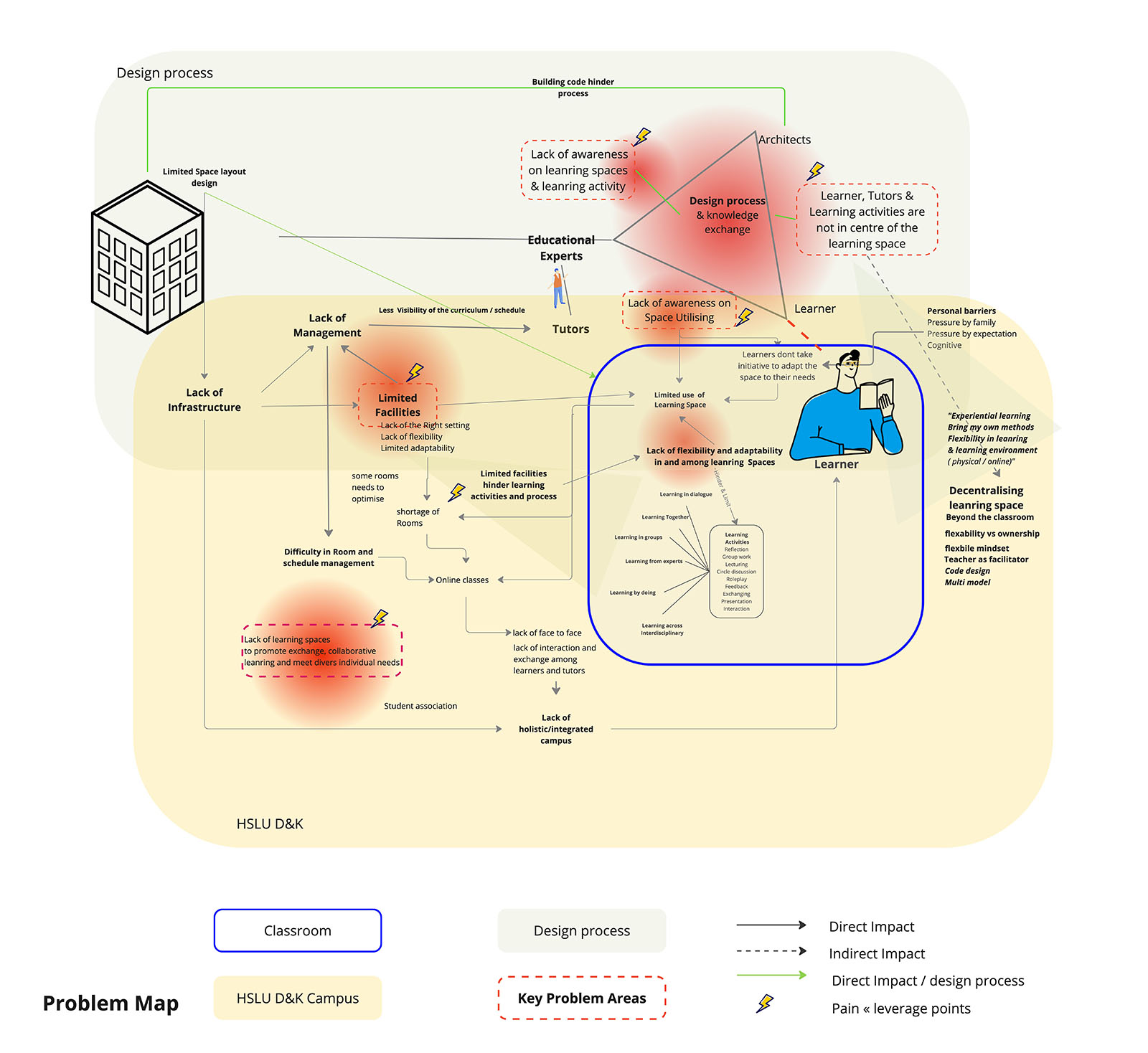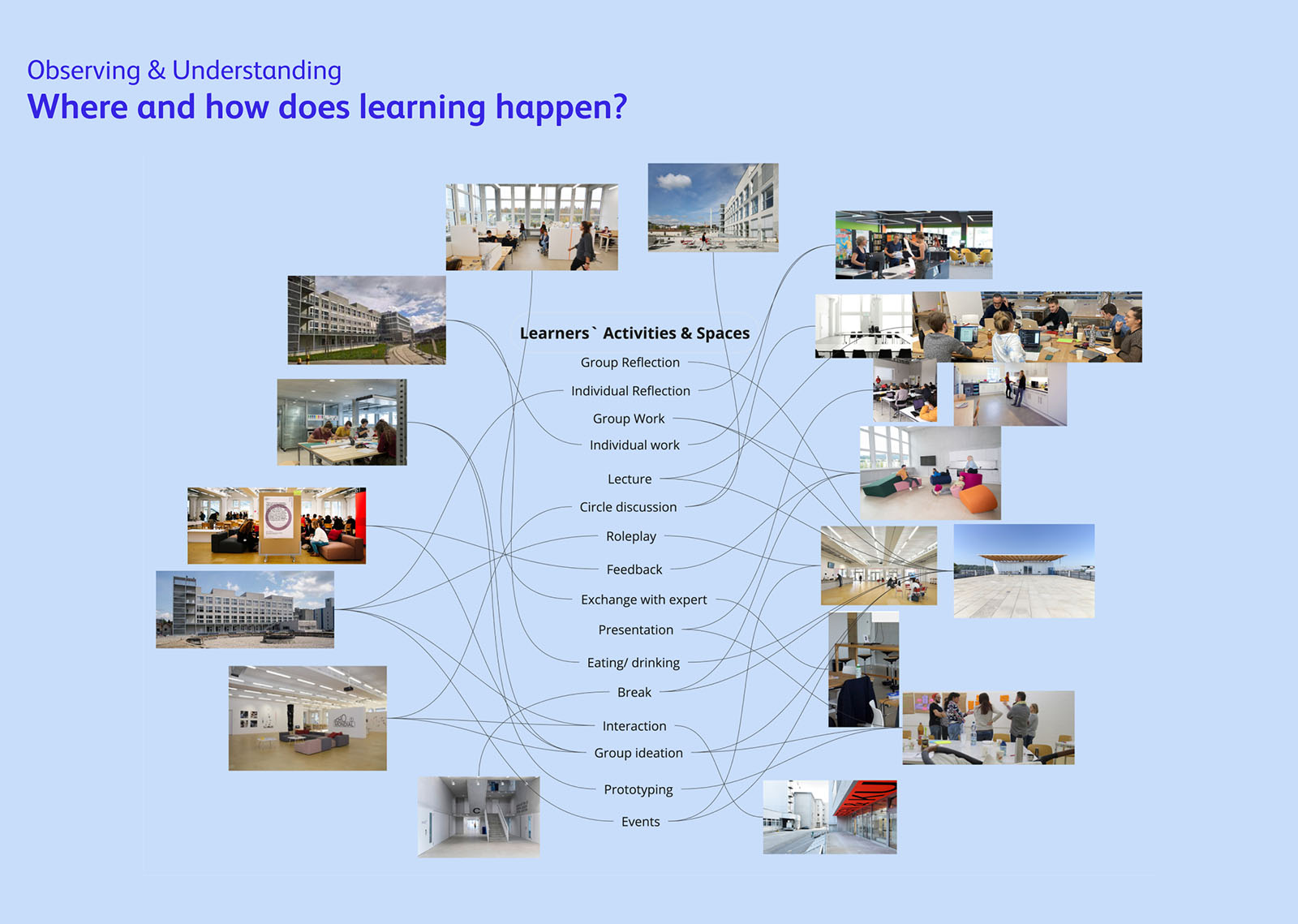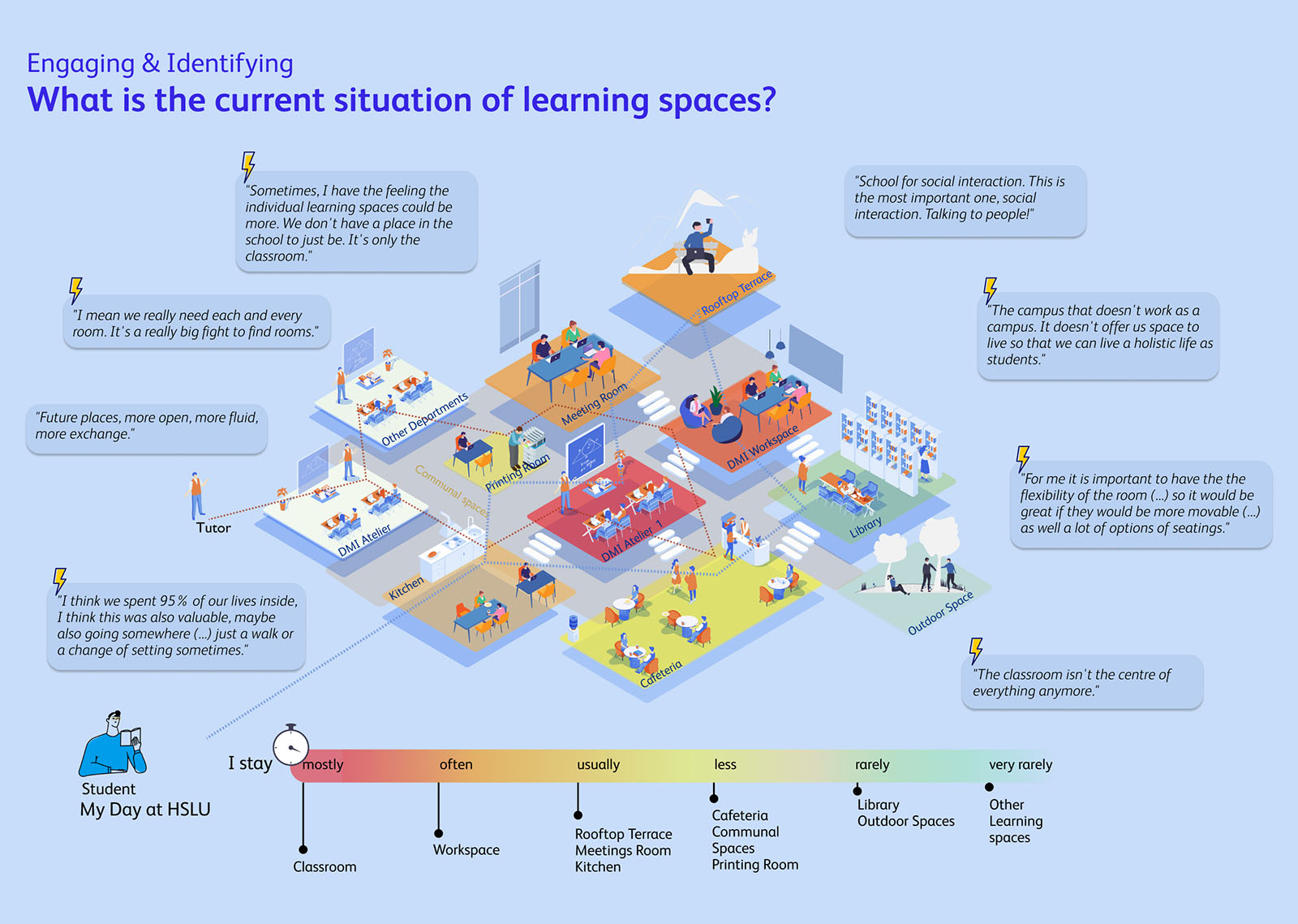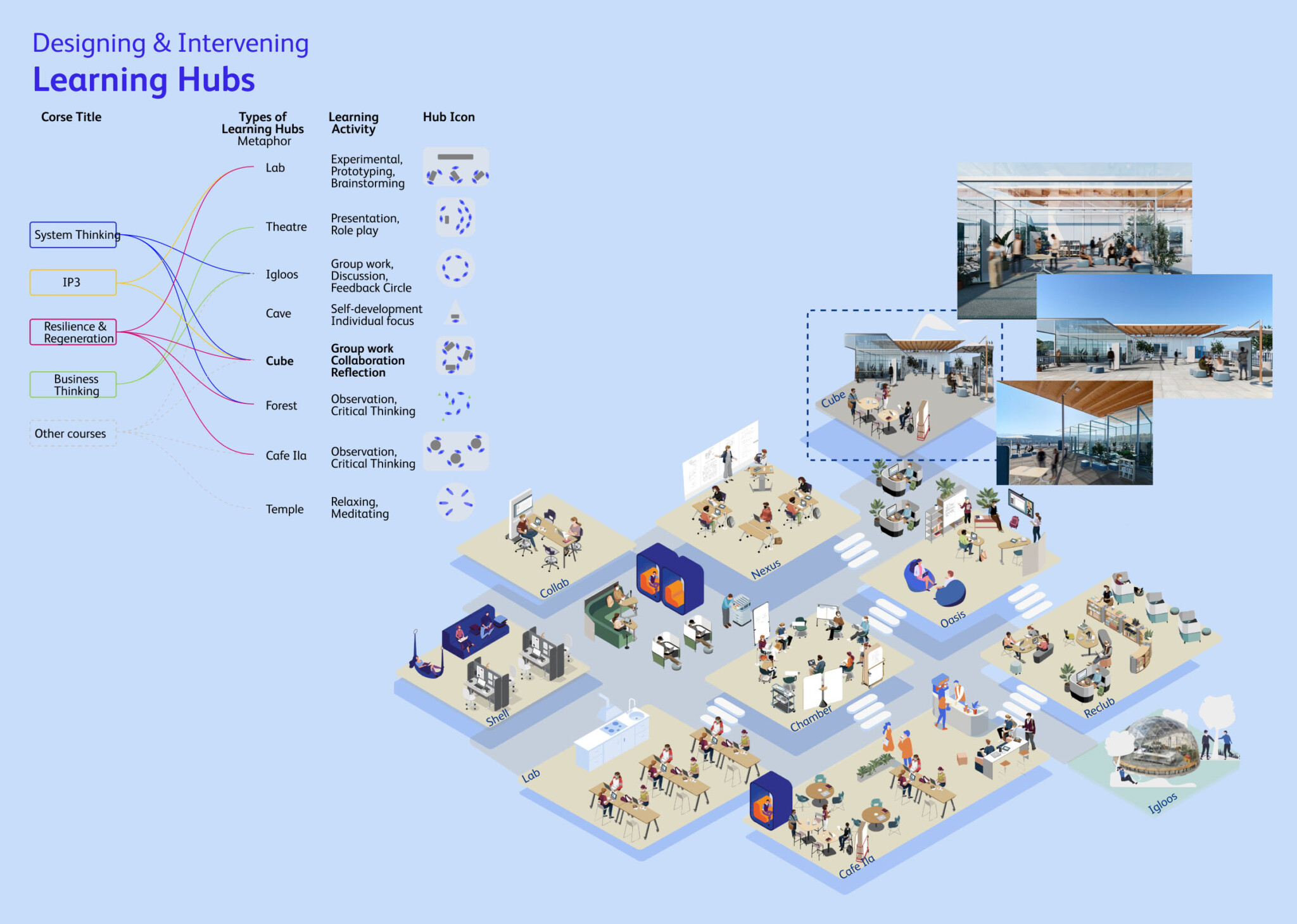Yehia Abouzaid
Transforming Learning Spaces
Fostering Collaborative and Individual Learning beyond the Classroom at HSLU D&K
Sensing the System
Learning spaces have often been viewed as passive backdrops that merely provide a framework for activities, opportunities for action, structures, and social interactions rather than being recognised as active agents in the learning process. The learning space refers to a physical setting for a learning environment, a place in which teaching and learning occur, profoundly impacts learners and their learning experience. It holds the potential to foster engagement, collaboration, and a sense of community among learners, but it can also result in disconnection and a lack of motivation.
As recently as a decade ago, learning spaces such as classrooms were the center of learning in Higher Educational Institutions. However, it is important to note that traditional Higher Educational Institutions in Europe has traditionally prioritised teaching and learning processes, often overlooking the critical role played by the learning space. This research investigates the current learning space within the context of HSLU D&K to understand the students needs, learning patterns and the barriers in the current learning spaces.
Engaging & Identifying
By actively engaging and discussing with the students and tutors who occupy and use the learning space at HSLU D&K, this known as a participatory approach, valuable insights and key findings has been gathered, shedding light on the existing barriers and identifying their needs in the space to facilitate effective learning. Hence, key findings have been emerged, including the absence of learner-centered design in learning spaces, lack of flexibility and adaptability spaces that hinder accommodating various learning activities, lack of learning spaces for collaborative and individual learning beyond the traditional classroom, and the resulting lack of holistic learning environment across the campus. This collaborative and participatory approach has involved creative actions in collaboration with relevant stakeholders, including tutors, learners, and architects, through Co-design workshops. These two workshops serve as an opportunity for collectively generating potential interventions (an action to improve or learn bout that situation)based on the students needs and the learning activities.Through an iterative testing and feedback process, the final concept of the intervention has emerged: Learning Hubs.
Intervening & Exploring Opportunities
Learning hubs empower students to actively engage in learning through enabling diverse learning activities within different learning context that promote experiential learning, brainstorming and collaboration. The learning hubs concept propose a potential action to transform and integrate existing campus spaces, including both classrooms and non-classrooms, into new learning spaces to foster a holistic learning environment and enrich the learning experience at HSLU D&K campus.









0 Kommentare
Kommentieren
Danke für Ihren Kommentar, wir prüfen dies gerne.